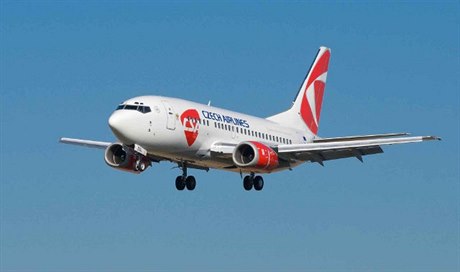Despite collecting the airport “Oscar” in the form of the IATA’s Eagle Award of Most Deserving Airport on Monday, Prague Airport faces tough times due to increased competition from other airports in the region and falling passenger numbers. The prospect of the Czech capital’s main airport fulfilling its aspiration to become a major international hub now appears increasingly remote.
With demand for air travel rising, recent reports indicate overall strong improvement in airlines’ business. However, for the time being at least, the optimistic outlook for the sector as a whole doesn’t count for Czech Airlines (ČSA), which in the first quarter of the year saw another drop in passenger numbers and flights, and flight occupancy 10 percent lower than the European average.
Given that ČSA flights account for 40 percent of passenger traffic at Prague Ruzyně Airport, the national airline’s performance directly affects the airport’s results. If ČSA continues to cancel routes and transfers more flights to the Slovak capital of Bratislava, the Czech Republic’s main airport can expect to face more testing times. While international airports in neighboring countries are reporting increases in passenger numbers, the number of flights to and from Ruzyně Airport has fallen, as have passenger numbers.
Neighboring competition
Vienna International Airport has three terminals with a fourth under construction, two takeoff and two landing runways (a third is planned). In 2010, the Vienna airport handled more than 20 million passengers and 246,000 flights, pretty much filling its capacity, and in the first three months of 2011 saw a 24 percent increase in passenger numbers compared with Q1 2010. It is also an important hub for flights to the Middle East and Eastern European and destinations in the former Soviet Union, a role Prague Ruzyně Airport has aspirations to fill. The airport is planning to spend €660 million — including €300 million this year alone — on development and expansion.
Munich Airport with a capacity for up to 50 million passengers a year is also a major regional rival for Prague. Munich, which is planning a third runway, and handles around 35 million passengers and 390,000 flights annually. The airport currently serves 230 destinations in 70 countries.
Warsaw also offers some competition, but compared to Munich and Vienna is a minor player. Warsaw Chopin Airport — which handles about 43 percent of the Poland’s air traffic — saw 8.7 million passengers in 2010, according to its website. It has two interesting runways and handles some 300 flights per day. In the first four months of 2011 it saw 11.2 percent more passengers than in the same period of the previous year. Domestic passenger numbers rose 28.5 percent and international passengers, who account for the vast majority of traffic, rose 9.1 percent. Cargo traffic in the first quarter rose 23 percent as well.
The Polish airport has been carrying out several infrastructure improvement projects including runway repairs ahead of the Euro 2012 football tournament, which Poland is co-hosting. A five-star hotel is also being built at the airport and is scheduled to open in 2013. The hotel will be owned by the state-run company that operates the airport, Polish Airports (PPL), and will be run under license from Marriott International.
Prague Ruzyně Airport is small in comparison to Vienna and Munich; with two terminals and one main runway, the airport currently handles around 11 million passengers and 150,000 flights a year. And in the first three months of 2011, Prague Airport saw a 3 percent drop in passenger numbers. To compound its problems, next year the new Berlin Brandenburg International Airport (BBI) opens; featuring one very large terminal between two runways, it will replace Schönefeld as the German capital’s main airport and initially anticipates handling 27 million passengers annually and eventually expanding capacity to cater for 50 million passengers.
The BBI airport is being equipped with the latest state-of-the-art technology, from logistics management systems to energy efficiency devices such as geothermal heating and cooling from rainwater. These technologies promise to significantly lower operational costs for the airport, which can then pass the savings on in its offers to airlines. Convenient road and rail connections to BBI promise to give the new flight hub a catchment area of several hundred kilometers. The planned Vienna–Prague–Berlin high-speed rail link should further boost the number of travelers from the Czech Republic using the airport.
Prague Ruzyně Airport isn’t simply stagnating while other airports grow. A new runway running parallel to the existing main runway is planned and has gotten past several hurdles, including complaints about potential noise increases, that were delaying the start of construction. Several plans for improved rail or public transport access to the airport are also being considered, but no final plan has yet been approved or launch date set. Until the plans actually get off the ground, though, the other airports that are making more definite concrete steps will retain the advantage.
Local player
The number of Czech residents who fly from other airports in the region including Dresden, Munich, Nuremberg, Bratislava and Vienna continues to rise at the expense of Prague Airport — and this trend looks set to accelerate with the opening of BBI. Prague Airport will soon have three major international airports as neighbors, and it will be very tough to compete with their price offers and conditions for airlines.
While Prague Ruzyně Airport will undoubtedly survive, it will probably do so as a regional airport of average significance; its bid to become a major international hub for the region is fading fast.




